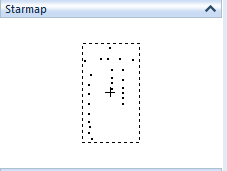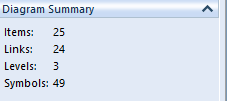The Problem
The teacher, or your customer, envisages a house built on a hill, they see this as their requirements. In their mind they understand what they want, they have an inherent understanding of how a house should be oriented.
The pupil, or supplier, may not have the same inherent understanding and this can disappoint the customer.

The Managed Requirements Solution
Managing requirements, managing expectations, ensuring clear and unambiguous understanding creates a successful project and a happy customer.
Furthermore, following a defined process of elicitation, discussion, refinement and validation will ensure all parties are kept in the picture throughout the process. There should be no surprises.
The stages can be generalised as:
- recording the Customer requirements (what the teacher said);
- connecting these to System Requirements (what the pupil thinks is the right way to place a house on the hill);
- reviewing and verifying with the customer that all is clear and understood (the teacher has a chance to see that the relative orientation has not been considered);
- correction and update;
- build and validate;
- Happy customer!
Equally we live in the real world and thing need and do change. A process needs to cope with and manage those changes. These may be customer initiated, corrections as part of the refinement and understanding stage, or external influences.
Control and Managing Change
This could be through a set of documents, but this is not very scalable. The more complex and numerous the requirements, the more difficult it is to manage the inter dependencies between different parts of the document set.
Imagine the simple case in our example:
- “The foundations shall comply with building regulation ABC”.
It is easy enough to imagine one chapter with some dimensions for the foundations and one building regulation document.
Remaining with the simplistic house:
- “Kitchen wiring shall provide one outlet for each of the 12 appliances in accordance with regulation GHI(i)”,
- “Lounge wiring shall provide a multiple in window bay and one outlet in each of the other corners in accordance with regulation GHI(i)”,
- “Bedroom 1 shall provide one outlet in each corner of the room in accordance with regulation GHI(i)”,
- “Bedroom2….”
It is still possible to get your head round the interconnects. It will be a bit more time consuming when GHI(i) is up-released to GHI(ii) and building work hasn’t started and you have to check all the items ordered for the socket outlets still comply in each room.
Conclusion
With a small scale step the complexity the above can soon become unmanageable. Our house may only have seven rooms, but what if these were tens of different compartments on a submarine, hundreds shops owned by a national retailer? GHI(ii)- sub section ‘Public accessible spaces’ is upgraded after a regulatory consultation. How many room specifications are affected?
In a managed solution, a simple report on elements dependent on GHI will give a quick way of calculating the cost impact of altering all the specified outlets. If the power outlets had been categorised when the requirements were written with say Public / Employee / Private access, the number affected, and thus the impact to your customer, could have been further refined.
Article Updated 30/01/2019 – Updated formatting





